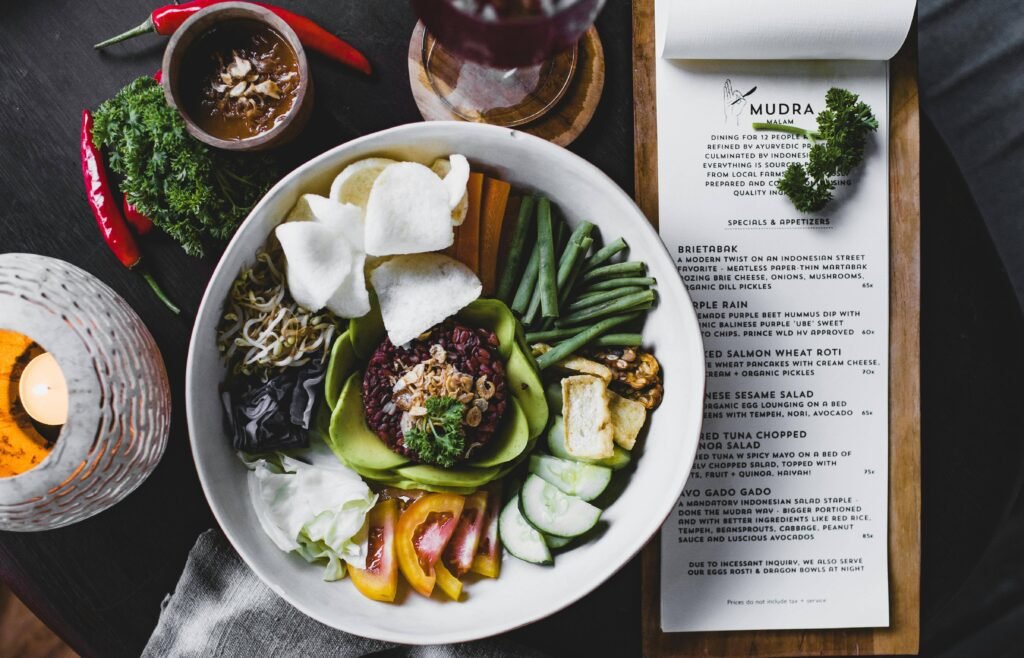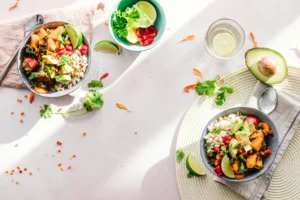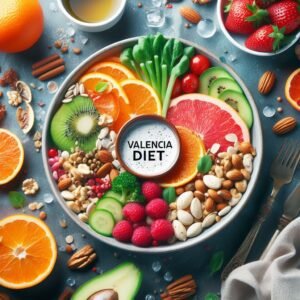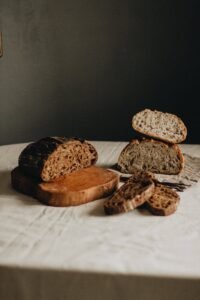
In a world where gastritis, characterized by inflammation of the stomach lining, can disrupt daily life, a well-crafted 7 day meal plan for gastritis emerges as a beacon of hope. This step-by-step guide isn’t just about your diet. It’s a strategic plan for soothing, nourishing, and treating your digestive system.
Imagine starting your day with a warm bowl of oatmeal topped with soothing bananas, progressing to a vibrant lunch of grilled chicken and steamed vegetables, and culminating in a dinner of succulent baked salmon paired with nutrient-rich quinoa. Each meal is a symphony of flavors carefully orchestrated to alleviate discomfort and restore balance. Say goodbye to gastritis woes and embrace a week of gastronomic delight!
Table of Contents
Understanding Gastritis
What is Gastritis?
Gastritis is inflammation or swelling of the lining of your stomach. It can be caused by a variety of things, such as bacterial infections, heavy drinking, NSAIDs, or stress.
Causes of Gastritis
The primary causes of gastritis include bacterial infections, especially by bacterium pylori (H. pylori), which is one of the most common causes of gastritis worldwide. Other factors such as excessive alcohol consumption, chronic vomiting, stress, and autoimmune diseases can also contribute to gastritis.
Symptoms of Gastritis
Symptoms of gastritis can vary from person to person but may include:
- Abdominal pain or discomfort
- Nausea and vomiting
- Indigestion
- Loss of appetite
- Bloating
- Belching
- Blood in vomit or stool (in severe cases)
Importance of Diet in Managing Gastritis
Diet plays a crucial role in managing gastritis symptoms and promoting healing of the stomach lining. A gastritis-friendly diet focuses on soothing and non-irritating foods while avoiding those that can aggravate inflammation.
Role of Diet in Gastritis
A well-balanced diet can help reduce symptoms of gastritis and prevent flare-ups. It’s important to steer clear of foods that are acidic, spicy, or fried, as they can irritate the lining of the stomach. Instead, opt for bland foods that are easy to digest.
Foods to Avoid
- Spicy foods: Examples include chili peppers, hot sauces, curry dishes, and dishes seasoned heavily with spices like cayenne pepper or chili powder.
- Acidic foods (citrus fruits, tomatoes): Citrus fruits such as oranges, lemons, limes, and grapefruits are acidic. Tomatoes and tomato-based products like tomato sauce or ketchup are also acidic.
- Fried and fatty foods: Foods that are deep-fried or cooked in a lot of oil fall into this category. Examples include french fries, fried chicken, fried fish, doughnuts, and fatty cuts of meat like bacon or sausage.
- Alcohol: Alcoholic beverages such as beer, wine, spirits, and cocktails contain alcohol and can irritate the stomach lining, especially in excess.
- Caffeinated beverages: Drinks containing caffeine, such as coffee, tea, energy drinks, and some sodas, are considered caffeinated beverages.
- Carbonated drinks: Drinking carbonated or fizzy beverages such as soda, sparkling water or carbonated soft drinks, can cause gas and bloating which can worsen gastritis symptoms.
Foods to Include
- High-fiber foods (fruits, vegetables, whole grains): Examples include apples, oranges, berries, bananas, broccoli, spinach, carrots, kale, whole grains like oats, quinoa, brown rice, and whole wheat bread or pasta.
- Lean proteins (chicken, fish, tofu): Examples include skinless chicken breast, turkey breast, fish such as salmon, trout, or tilapia, tofu, tempeh, and legumes like lentils, chickpeas, or black beans.
- Low-fat dairy products: Examples include skim or low-fat milk, yogurt (unsweetened or low in added sugars), cottage cheese, and reduced-fat cheeses like mozzarella or feta.
- Herbal teas (such as chamomile or ginger tea): Examples include chamomile tea, ginger tea, peppermint tea, lemon balm tea, and rooibos tea. These teas are caffeine-free and can have soothing effects on the digestive system.
- Healthy fats (olive oil, avocado): Examples include extra virgin olive oil, avocado, nuts (like almonds, walnuts, or cashews), seeds (such as chia seeds, flaxseeds, or pumpkin seeds), and fatty fish like salmon, mackerel, or sardines.
- Probiotic-rich foods (yogurt, kefir): Examples include plain yogurt (with live active cultures), kefir, fermented vegetables (such as sauerkraut or kimchi), miso soup, and kombucha. These foods contain beneficial bacteria that can promote gut health.
7 Day Meal Plan for Gastritis

Day 1:
- Breakfast: Oatmeal with sliced bananas and almond milk
- Lunch: Grilled chicken breast with steamed vegetables
- Dinner: Baked salmon with quinoa and roasted Brussels sprouts
Day 2:
- Breakfast: Greek yogurt with honey and mixed berries
- Lunch: Turkey and avocado wrap with spinach
- Dinner: Vegetable stir-fry with tofu and brown rice
Day 3:
- Breakfast: Scrambled eggs with spinach and whole-grain toast
- Lunch: Quinoa salad with mixed greens, cucumbers, and feta cheese
- Dinner: Lentil soup with whole-grain bread
Day 4:
- Breakfast: Smoothie with spinach, pineapple, banana, and almond milk
- Lunch: Grilled shrimp skewers with quinoa tabbouleh
- Dinner: Baked chicken with sweet potatoes and green beans
Day 5:
- Breakfast: Whole-grain toast with almond butter and sliced strawberries
- Lunch: Vegetable and bean chili with a side salad
- Dinner: Roasted vegetable and chickpea Buddha bowl
Day 6:
- Breakfast: Overnight oats with chia seeds, almond milk, and sliced peaches
- Lunch: Turkey and hummus wrap with mixed greens
- Dinner: Grilled tofu with steamed broccoli and brown rice
Day 7:
- Breakfast: Cottage cheese with sliced pears and walnuts
- Lunch: Quinoa-stuffed bell peppers with a side of roasted asparagus
- Dinner: Baked white fish with quinoa pilaf and steamed carrots
Conclusion
Following a well-planned meal plan can help manage gastritis symptoms and promote healing of the stomach lining. By integrating soothing and nutritious foods while avoiding irritants, People with gastritis have the potential to improve their digestive health and overall health.
FAQs about Gastritis Meal Plans
1. Can I drink alcohol while following a gastritis meal plan?
It’s best to avoid alcohol altogether as it can aggravate gastritis symptoms and interfere with healing.
2. Are there any specific foods I should eat if I have gastritis?
Focus on bland, easily digestible foods such as lean proteins, fruits, vegetables, and whole grains.
3. How long should I follow a gastritis meal plan?
As long as the symptoms are present, the best thing to do is to follow a diet that supports gastritis and talk to your doctor for personalized treatment.
4. Can I have caffeine while on a gastritis meal plan?
It’s advisable to limit or avoid caffeinated beverages as they can increase stomach acid and worsen gastritis symptoms.
5. What if I experience worsening symptoms while following a gastritis meal plan?
If your symptoms worsen or you have new worries, it’s important to speak to a doctor or other healthcare provider for further assessment and advice.



